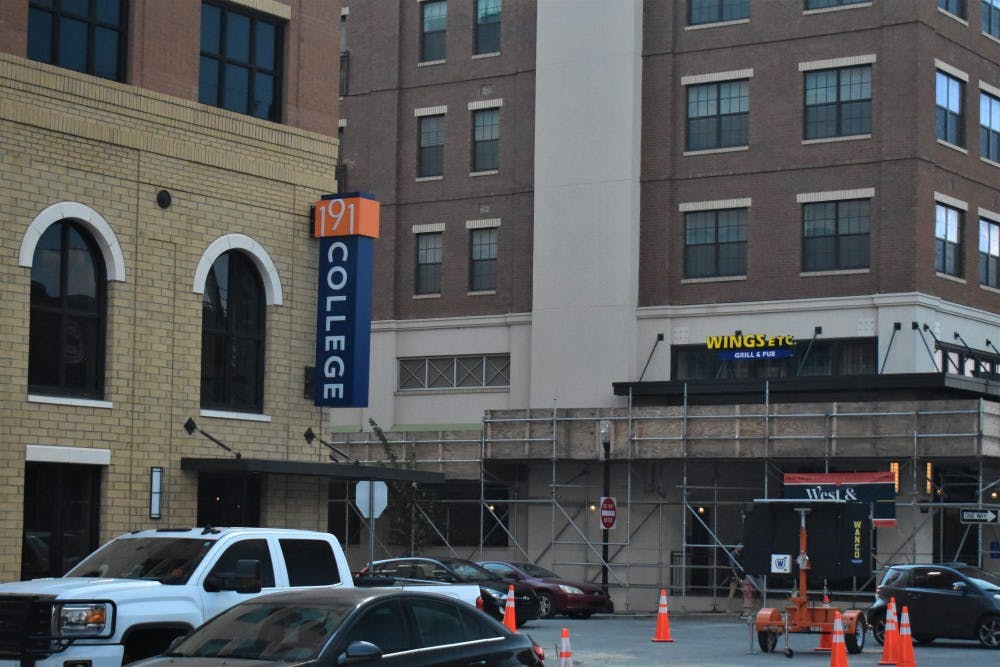On Tuesday, Nov. 12, the City of Auburn’s Student Housing Task Force held its first meeting since Oct. 18, when it first discussed the 2019 Student Housing Task Force Report.
The meeting, held in the City’s public meeting room on Tichenor Ave., was adjourned after a short period of group discussion among the five members in attendance. Six members were absent.
Mayor Ron Anders, the founder and one of the members of the Student Housing Task Force, said after the meeting that this was “probably” the last of the task force’s meetings.
“It’s time to take some intentional action from the City level,” Anders said.
The purpose of Tuesday’s meeting was to once again review the findings of the City of Auburn’s 2019 Student Housing Task Force Report.
“It’s very clear to me that we’ve got significantly more beds than students,” Anders said. “And since that number of students is not going to grow and that number of beds is not going to diminish, we’ve got a challenge in front of us.”
Task force member Ray Huff, the owner of Auburn Realty, a local real estate company that owns various student housing properties around Auburn, thanked Anders and the City for conducting the report, saying it was “the best information that we’ve ever seen, we’ve ever had.”
Huff believes the information in the report is fairly accurate in its account, which places the current total number of bedrooms for student housing at 34,678, but there still may be even more rooms that were not counted.
“I think, taking that information and adding other things to it through industry knowledge, that it was pretty much established that we’ve probably got 40,000-plus beds and 30,000 students,” Huff said.
Huff admitted Tuskegee University students and Southern Union State Community College students may also fill the bedrooms, but there is a debate over how many of them actually do.
Huff offered three different approaches for the City to look into in the future as it makes its decision.
The first was for the City to enforce new structural standards, such as requiring steel instead of wood framing, which may be more “cost involved” and “prohibitive to some of those people wanting to come downtown and build these large structures.”
The second approach Huff offered was for the City to find ways to redirect growth away from downtown through City ordinances.
Assistant City Manager Megan McGowen Crouch pointed out that part of the reason that the downtown area was targeted so heavily for development was because of the opportunity zone designation the area was given by the federal government, which the City had no power or say over.
Businesses are given certain tax incentives to develop in opportunity zones, which are places the federal government deems as economically distressed.
“We made no request to have an opportunity zone in this area,” Crouch said. “We didn’t get it on Opelika Road, we didn’t get it in Northwest Auburn, we got it smack dab in downtown Auburn.”
The third strategy that Huff offered was to limit the number of beds to each student housing development, possibly at around 100 beds per development.
Huff stressed that further decisions should continue to be informed by the opinions of the private sector as well as the government.
Anders said that with the information gathered, the expected plan from the University to keep undergraduate enrollment around 25,000 students and the input they have received from students and community members, they are ready to move forward with the process and develop a strategy to address the surplus of student housing in the City.
“Certainly, from a citizen’s standpoint, we are open to hear your ideas and your thoughts about how to go about doing this,” Anders said. “It’s not simple and it’s not black and white, but it’s something I think we’ve got to get going sooner rather than later.”
The City Council and the Planning Commission will determine if student housing is an issue and, if it is an issue, what strategy to take to try and resolve the issue, Anders said.
“We’ve got a lot of smart and experienced people that I need to listen to and get some leadership from there, and then it’ll be up to me to guide and initiate the discussion with the Council,” Anders said. “You’ve got to act quick, but you can’t be reckless.”
Do you like this story? The Plainsman doesn't accept money from tuition or student fees, and we don't charge a subscription fee. But you can donate to support The Plainsman.

Evan Mealins, senior in philosophy and economics, is the editor-in-chief of The Auburn Plainsman.





